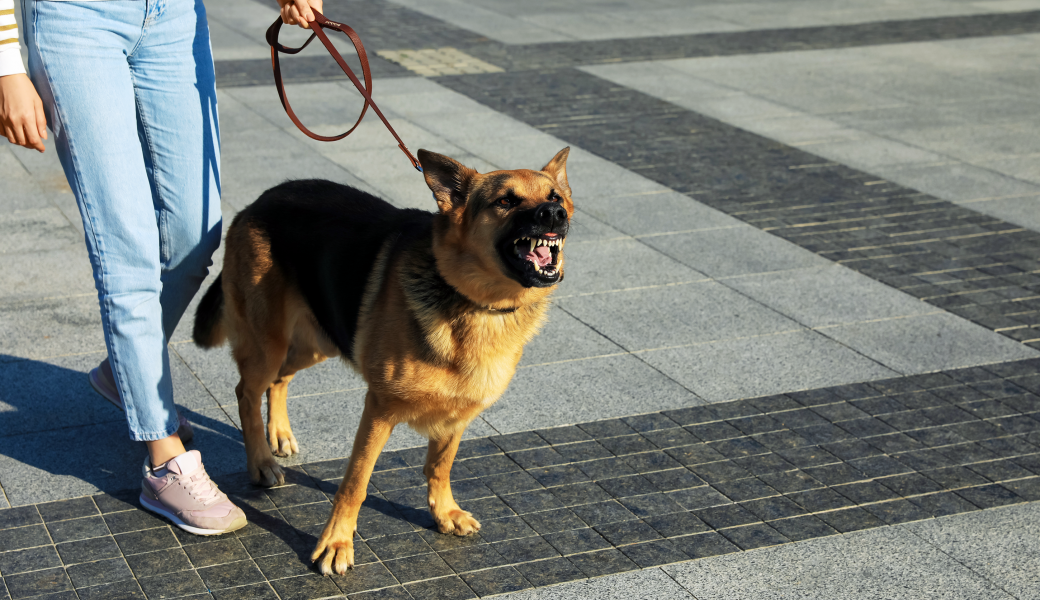
Dealing with an aggressive dog can be a frustrating thing. For some dogs, aggression can happen during different situations around different people which can be very stressful. While curing aggression in dogs can be a challenging task, we’re here to make it a little easier. Giving a Dog a Bone is your go-to resource for all things dog training related. We will delve into the complex issue of dog aggression and provide you with practical strategies and techniques to manage and overcome it. Whether you have a new puppy exhibiting signs of aggression or a long-time companion showing aggressive behavior, this guide will help you create a harmonious environment for both your furry friend and your family.
If you’re in need of South Florida dog training, Giving a Dog a Bone is here for you! We offer specialized dog training programs that can help with such issues such as aggression, anxiety, fear, and more! Contact us today if you have any questions about our training methods.
Dog aggression is a common concern among pet owners, but it’s crucial to remember that aggression is a natural behavior rooted in a dog’s instinctual responses. Aggression can manifest in various forms, such as territorial aggression, fear-based aggression, or social aggression. Identifying the underlying causes and triggers is key to addressing and managing aggression effectively.
If your dog’s aggression is persistent, severe, or escalating, it’s essential to consult with a professional dog trainer or behaviorist. They can conduct a thorough assessment to determine the root causes and develop a tailored plan to address the aggression. Remember, seeking professional guidance is a proactive step toward ensuring the safety and well-being of everyone involved.
Dogs thrive in environments with clear boundaries and consistent leadership. Establishing yourself as the pack leader helps provide a sense of security and stability for your dog. Implementing structured routines, setting rules and expectations, and utilizing positive reinforcement techniques will help your dog understand their place in the family hierarchy.
Positive reinforcement training is a powerful tool for modifying aggressive behavior. By rewarding desired behaviors, you reinforce positive associations and encourage your dog to make better choices. Focus on rewarding calm, non-aggressive behaviors and redirecting their attention away from triggering stimuli. Consistency and patience are key when implementing positive reinforcement techniques.
Desensitization and counterconditioning involve gradually exposing your dog to the triggers of their aggression in a controlled and positive manner. This process helps them form new, positive associations with previously fear-inducing or threatening stimuli. Working with a professional trainer can be invaluable during this process, as they can guide you through the steps and ensure your dog’s safety and progress.
A safe environment plays a significant role in managing dog aggression. Identify potential triggers and remove or modify them to minimize your dog’s exposure to situations that may lead to aggression. Use physical barriers, such as gates or crates, to create designated safe spaces for your dog. Additionally, providing mental and physical stimulation through regular exercise, interactive toys, and mental enrichment activities can help alleviate stress and reduce aggressive tendencies.
Managing dog aggression is an ongoing process that requires patience, consistency, and ongoing support. Regular training sessions continued socialization with well-behaved dogs, and maintaining a calm and structured household environment will aid in long-term success. Remember that progress may take time, and setbacks are normal. Be patient and seek professional advice when needed.
Conquering canine aggression is a journey that requires commitment and understanding. By implementing the strategies outlined in this article, you can create a safe and harmonious environment for your dog and your family. Remember, professional guidance and support are invaluable resources, so don’t hesitate to seek assistance if needed. At Giving a Dog a Bone, we’re here to support you every step of the way on your dog training journey.